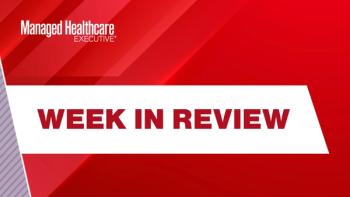
Eight ways to retain high-deductible members
High-deductible plans are often used by relatively healthy people with a small chance of exceeding the plan's annual deductible. These individuals have little loyalty to their plans. Here are eight ways health plans can create "stickiness" to keep members happy.
In the movie “Joe Versus the Volcano,” there is a classic scene when Joe, played by Tom Hanks, walks into his dark, dingy office and his boss is on the phone loudly repeating, “I know he can get the job, but can he do the job?” For many health plan executives, the proliferation and popularity of high-deductible health plans has posed a similar refrain, “I know we can get the member, but can we keep the member?”
High deductible health plans are often the product of choice for relatively healthy people who have little likelihood of exceeding the plan’s annual deductible. The main factor in their initial selection of a plan was cost. With low to no use of the plan’s contacted providers and no other interaction with the health plan, these members have little loyalty to their plan and will quickly switch to a competitor if it offers a lower premium.
Related:
Thus arises the challenge of creating some sort of “stickiness” between a health plan and its members that reduces attrition to competitors.
Below are eight ways a health plan can offer its members value, even when they don’t hit their deductible, so that members will renew despite lower cost alternatives.
Get the basics right.
At least two weeks before a member’s effective coverage date, send an accurate ID card, access to an online directory, benefit details and plan contact information. Let members know they are enrolled and have immediate access to care.
Answer member calls as quickly as possible.
Failing to answer calls quickly is probably one of the biggest issues for members-when they call they want to talk with someone and get their problem fixed. Interactive voice response systems have become a bane in the healthcare industry. Ditch the system and answer the phone with real people.
Clarify prescription benefits.
The one area where most members access their health plan is through their prescription drug benefits. Spend extra effort helping members understand how to maximize their benefit. Discounts on over-the-counter medications are a nice additional benefit.
Help members manage their deductibles.
Offer tools that accurately provide meaningful price and quality transparency and treatment options. Include telehealth alternatives for convenient low-cost access to minor emergency care.
Listen to members.
Beyond administering an annual survey, find out what members like, dislike and want to see changed about the health plan. Incorporate their suggestions as much as possible.
Help members stay healthy.
Incorporate a healthy practices page on the plan’s website with frequently updated information, links to useful sites and discounts on healthy foods and products.
Thank members for their business.
Too often the only communication most members receive from their health plan is a premium notice and annual renewal statement with a rate increase. Plan regular communication with members throughout the year and include ways to say thank you for their business.
Make satisfaction and retention every employee’s job.
From recruiting employees to training, evaluating and rewarding job performance, the member must be at the center. Celebrate and communicate the importance of taking care of the plan’s members.
Once you’ve gotten members enrolled, by incorporating these simple recommendations, you’ll be more successful in keeping them enrolled.
ABOUT THE AUTHOR
Don Hall, MPH, is principal of
Newsletter
Get the latest industry news, event updates, and more from Managed healthcare Executive.





















































